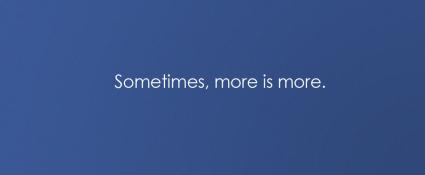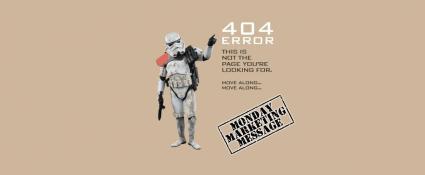
Your website is a business tool and, as such, requires a business decision. Too many leaders want to abdicate responsibility in making decisions. CEOs will often defer critical decisions when they don’t understand what it all means. The single most important responsibility of a CEO is ensuring that the company has a coherent message that matches the right audience.
When creating any marketing piece, there are four distinct roles required. The mix for each of these four roles will vary depending on the requirement of the project. These roles are the marketing director, copywriter, artist and technical person (IT). If you are missing any of these skills on your team, then someone will have to take on double duty (this includes you). I highly recommend that you make sure that these skills are distinct from each other and outsource a skill completely if you need to.
You, as the CEO, are not included in this mix (yet). You are the visionary. You are the one that sets the objective. Your role in this mix will be made more clear when we start talking about Objectives, Strategies and Tactics in the next chapter.
Marketing Director
Next to the CEO, the marketing director has the most important role and must be in sync with the CEO’s vision. The marketing director is responsible for making sure that the message for the website matches the business requirements and fits properly with the company’s objectives. The marketing director should shield the CEO from elements that don’t require his help, while encouraging involvement with any elements (such as brand image) that require his input.
At the end of the marketing initiative, it is the message of the company that must be conveyed. No marketing initiative can be effective without someone skilled organizing every aspect. Most good marketing companies (Web or otherwise) will take on this role for the small business and will work in concert with on-staff marketing directors for large companies.
The marketing director is also responsible for design. When we talk about building the Web presence, we’ll explore what this means.
Copywriting
My experience has been that the content for any marketing initiative is truly the hardest part. You’ll find yourself in a bit of circular logic, because you’ll want to see the artwork so you can write the content, but you can’t complete the artwork until you have the content.
If you talk to most experienced Web developers, brochure creators, billboard designers and other commercial artists, you’ll find one key similarity among all: content precedes design. Your content is the most important part. It needs to stand alone, without the trappings of beautiful artwork.
Talented copywriters understand that your message is important no matter the picture. We say that a picture is worth 1,000 words, but before a picture is ever created, there were 1,000 words used to describe it. It is your copywriter’s job to write the words for the artist to create the picture.
Artistic
Artwork means nothing without a message behind it. Any good presentation requires content that is meaningful and a visual representation to support the message. An experienced graphic designer will expect an equally qualified content writer to produce the message so that the artwork has meaning.
The challenge most CEOs and marketing directors have with the graphical side of Web marketing is the misconception that the designer should make all of the decisions on how the website will look. What they fail to understand is that, in the absence of a clear, strategic objective and well-thought-out content, the artist is required to make too many assumptions as to the intent of the marketing initiative. A talented artist needs ambiguity removed and specific guidelines as to what is expected in order to create a visual presentation that supports the objectives of the company.
Technical
It is easy for someone with limited Web marketing experience to assume that the technical support should make the decisions for how the CEO’s vision is translated to the Web. After all, the website is built on a server, using code that only technical people understand.
Today, website building tools are much easier than they used to be, and small businesses need limited technical support. More complicated Web applications and marketing initiatives require a more refined skill set.
As you define a strategic business direction, don’t worry about what coding language or server technology is used. The IT person’s role is to provide appropriate limitations to streamline the business decision for the CEO. If budgets are a concern, then the IT person needs to make sure that the CEO knows what should be left out. He or she must be ready to provide reasonable alternatives to give the CEO the best possible options.
Bottom Line
The hardest thing for any CEO is to delegate appropriate responsibilities. Usually, CEOs delegate the things they don’t want to do. Rather, you need to limit your decisions to setting objectives. You’ll want your marketing director to define the overarching strategy, while your copywriter, artist and technical person should define the appropriate tactics related to his or her function. Once you have defined the objective, each of the three key roles of copywriting, artistic and technical no longer report to you but to your “General,” the marketing director.



